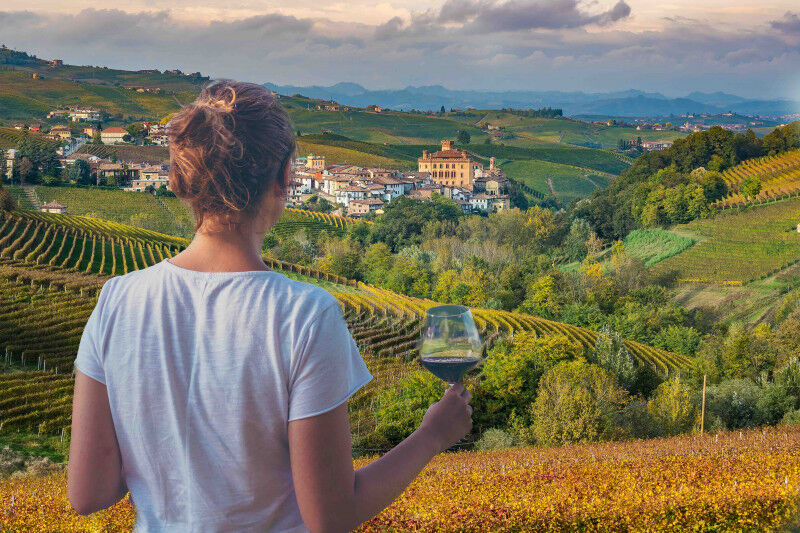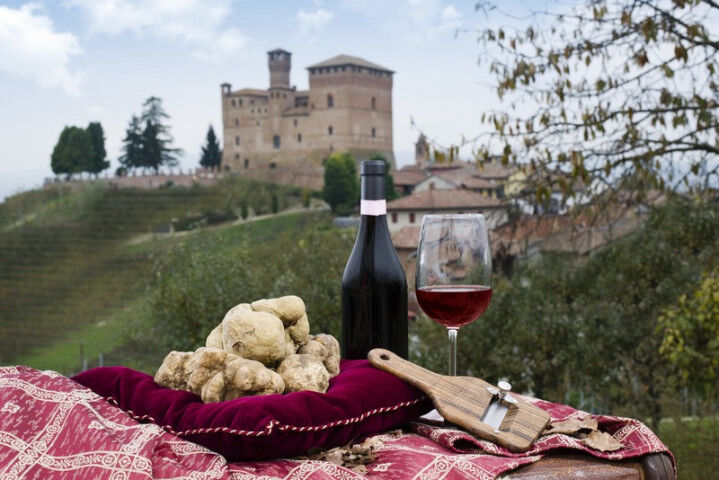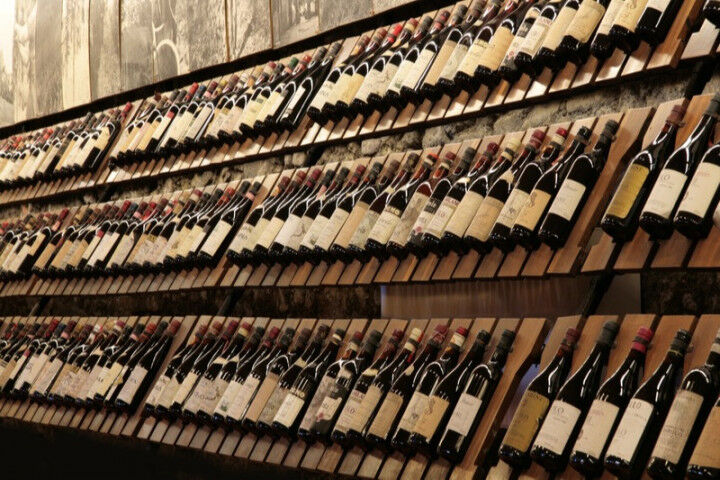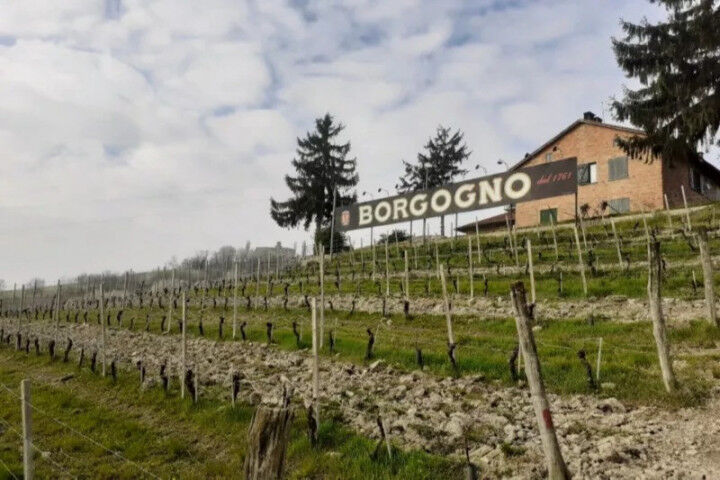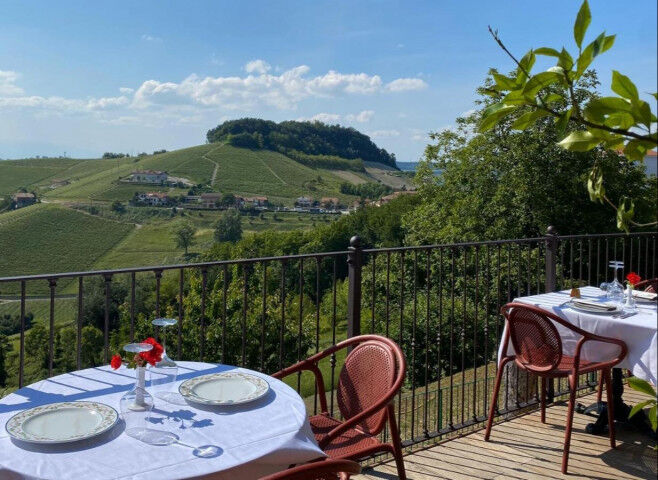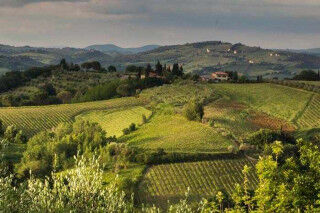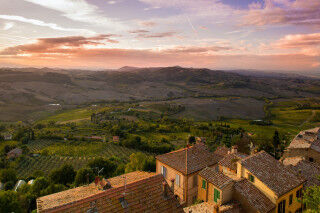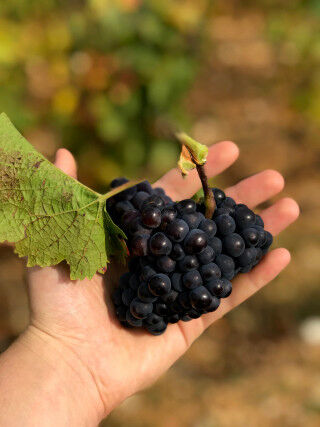Where does the name Langhe come from?
There are many theories regarding the etymology of the word "Langa," but the one that says it is after the saying in local dialect "andar per langa," which means to walk on the crest of the hills, doesn’t require too much imagination to understand the connection and be convinced.
Andare per langa, andare per vigna: and there you have it, the most effective incipit to associate with this celebrated wine-growing paradise that’s incredibly scenic and at the same time difficult to get close to.
Strips of land that intertwine to indicate the reliefs that run parallel to each other, forming narrow and elongated valleys (from the French "langues"), or length, longitude (from the German "länge") do not change my interpretation of the area much: aristocracy and austerity that blend into order and elegance, with a subtle vocation for melancholy and reflection.
A unique landscape, where the succession of hills covered by interrupted rows of vines, dotted with villages, fortresses and manors, such as that of Barolo (which now houses an amazing wine museum) or the fortified castle of nearby Monforte.
What to eat in the Langhe? Cuisine, local dishes and specialties
Local dishes of the Langhe
The Langhe is the undisputed realm of eno-gastronomy, where the cuisine and the wine are the result of a mosaic of excellent products: the white truffle of Alba, the great cheeses, the fine Piedmont meats, the Tonda Gentile hazelnut, and Nebbiolo grapes.
And from these happy encounters, the famous traditional dishes are born: veal in tuna sauce, salted tongue, braised meats, boiled meats with their sauces, tajarin with Castelmagno cheese fondue, ravioli (plin) stuffed with meat sautéed in butter... All this and much more, accompanied by his majesty Nebbiolo, in its excellent "simple" version, as well as in that of Barolo or Barbaresco.
The King of wines: Barolo... Do you know the story of Barolo?
Barolo, in particular, is certainly one of the most important red wines of the world and has aristocratic origins. Count Louis Oudart, an enologist, was called to Piedmont by Marchioness Giulia Falletti di Barolo, who asked him, at the beginning of the nineteenth century, to create a new recipe for her Nebbiolo grapes, in order to obtain a wine capable of competing with French ones.
Why Barolo is so special?
Barolo is a wine with great structure and an intensely velvety color and bouquet.
Its bouquet distinguishes it from all the others, therefore its alcoholic power, the quantity of acids and tannins make it eminently able to age as well as suitable for export.
Which are the best Barolo wineries to visit?
The worldwide success of the wine began in the 1980s, when producers such as Conterno, Giacosa, Mascarello and Rinaldi, joined solid wineries such as Fontanafredda, Marchesi di Barolo, Pio Cesare and Borgogno, all contributing to transform this great red into a true legend.
Borgogno is one of the most "ancient" names that perpetuates a consolidated tradition of this nectar, offering the truest dimension of Barolo (town) and of Barolo (wine), which continues to tell the story of a passion for rural life and has become a myth steeped in the pleasure of conviviality and gluttony.
For all intents and purposes, Borgogno is an evocative force that exerts a unique attraction on wine lovers with wines capable of being able to age for a very long time in the bottle with great ease: in fact, many vintages from the 40s, 50s and 60s of the last century are still incredible and highly sought-after. Learn more about great Italian vintages.
Thanks to the excellent work of Andrea Farinetti, the winery is running with an ultra-expedited pace and (still thanks to him) the ancient splendor of their headquarters and of the vineyards has been fully restored.
What to see in the Langhe in a day?
From Barolo we move to La Morra, another recognized capital of Barolo and we stop at the Annunziata hamlet to visit the Romanesque-Baroque complex of the former Benedictine Abbey of San Martino di Marcenasco: a church with a 17th century façade, apse and bell tower dating back to the 15th century.
We can then venture to Verduno and take a nice walk on the hill of Monvigliero, a splendid historic vineyard rich in fame and charm.
From here we continue to Novello (passing by Barolo again), and we reach its castle which dominates the splendid fortress high above vineyards and woods, a visual stronghold of this part of Langa. It is a close relative in its nineteenth-century neo-gothic shapes of the scenic Albertina farmhouse of Pollenzo.
Another scenic winding road then leads us gently to Monforte (600 m above sea level), which, given the altitude on the way, is as if it were dilating by taking the wandering eye from hill to hill until it gets lost in the Alps.
The last vine-growing area then turns into meadows and hazelnut groves, and then when you finally reach Monforte the vine once again becomes the undisputed master. This communal territory is rather vast and there are wineries present almost everywhere, in suggestive locations.
You can easily reach the following wineries by car: Aldo Conterno and Armando Parusso at Bussia, Giacomo Conterno at Ornati, Domenico Clerico on the road to Monchiero. All of them will gladly open the doors of their cellars to you.
From Monforte we head to Serralunga, one of the most charming villages of the Langa del Barolo. Around the perfectly preserved castle, the historic center with concentric streets has an ancient feel that is difficult to find elsewhere. It is a real pleasure to enjoy the view of the great crus such as Santa Caterina, Lazzarito, Lazzairasco, Parafada, Gabutti, just to name a few.
Going down towards Alba, it is worth stopping at the Fontafredda Estates, recognizable in their horizontal band painting, preserving all their 19th century charm. It is a place rich in memories with its lush park, its cellars and its hunting lodge. Then go back uphill to Castiglione Falletto where its castle in the center of the village (now owned by the prestigious Cavallotto winery) with its angular cylindrical towers and the mighty central keep awaits you.
Now you can go back downhill (still by car) and head to Grinzane Cavour, just a few houses around the austere but beautiful silhouette of the fortress, now the seat of Enoteca Regionale dei Vini Albesi.
Via Vallada, 18 – 12065 Monforte d’Alba, Cuneo.
A period villa that surprises and enchants, set in a postcard-perfect location, where you can eat excellent tradition dishes, drink incredible Langhe wines and feel like you’re a part of history and culture with the owners, a very welcoming family.
In addition, the rooms of the hotel are very elegant and planned down to the last detail to ensure you enjoy absolute relaxation, with memorable panoramic views over most of the Alps.
Via Alba 15 – 12050 Serralunga d’Alba (CN)
In the magnificent nineteenth-century setting of Villa Fontanafredda, the Alciati family offers Piedmont delicacies in a refined location that recaptures the ancient while gently blending with the modern.
Località Sant'Anna, 87 - 12065 Monforte D'alba, Cuneo.
In the wide open countryside, the flavors and concreteness of the Langhe are highlighted in an excellent cuisine that fully celebrates this unique territory.
Via XX Settembre, 18 - 12064 La Morra (CN)
A great wine list accompanies tasty dishes from the extraordinary Langhe tradition.
